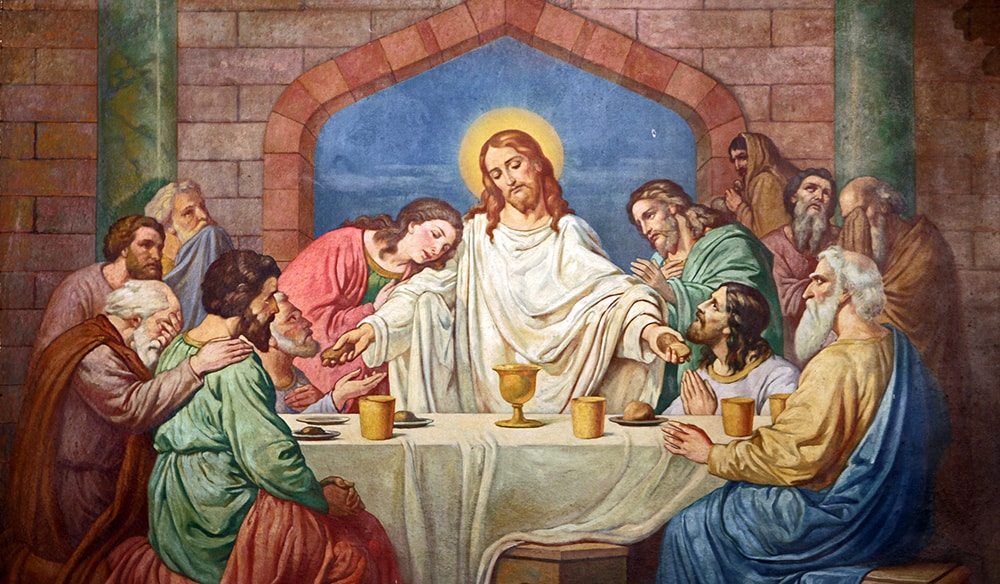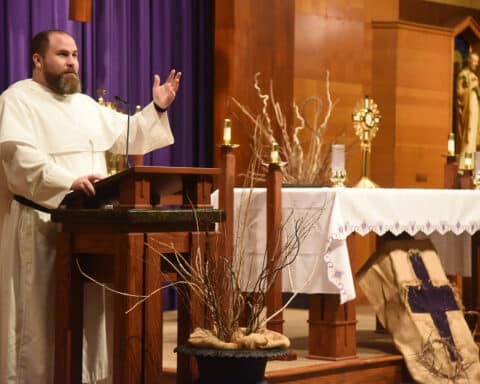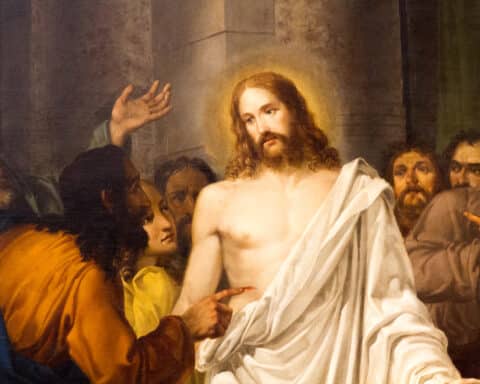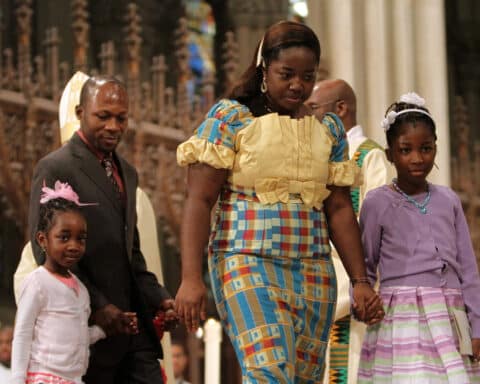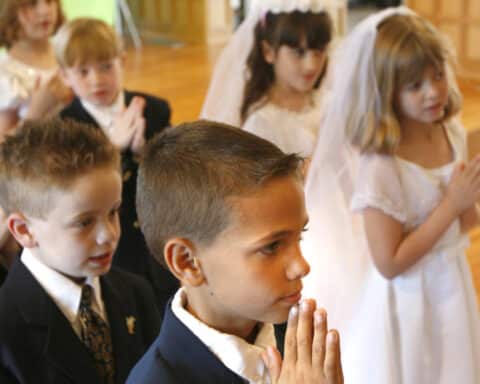Question: Why did Jesus tell his followers to eat his Body and drink his Blood? It seems like such a grotesque request.
— Anthony Navarra, via email
Answer: It is, to be sure, a shocking mandate, and many of the Jews who first heard it were indeed quite dismayed. They said, “How can this man give us his flesh to eat?” (Jn 6:52). Yet Jesus insists and even uses impolite terms in Greek for eating, such as trogon (Jn 6:54), a word which means to gnaw on, munch or crunch. Many actually left Jesus over this teaching (c.f. Jn 6:66).
Why Jesus insists on this teaching and method of feeding us can be answered in several ways. First, in terms of precedent, we can look to the Old Testament practices of Passover and the Temple sacrifices. We note that in the Passover just before the Exodus from Egypt, each family was to procure a lamb, slaughter it, eat it and put some of its blood on their doorposts. The blood of the lamb would cause the angel of death to pass over that house. So the blood of the Passover lamb was a kind of saving blood, and we note that the people ate that lamb.
In the Jewish temple sacrifices, some animals were killed and wholly burnt up. This was called an olah; literally, “ascending offering” (Lev 1, Lev 6:8-13). However, a common practice was the sacrifice of a well-being/fellowship offering (zevah shelamim; Lev 3, Lev 7:11-35). In this sacrifice the innards (fat, kidneys and part of the liver) were burned in the altar fire. But most of the meat of the animal was eaten, divided between the priests and the offerer. Hence, here again, the offerer ate some of the animal sacrificed.
Thus we see in the Old Testament the concept of participating in a sacrifice by eating some of it. Christ is our paschal lamb and is sacrificed for our sins, and we, too, eat of his very body and blood.
Jesus gives further reason to eat his flesh and drink his blood. He says, “Whoever eats my flesh and drinks my blood has eternal life, and I will raise him on the last day. For my flesh is true food and my blood is true drink. Whoever eats my flesh and drinks my blood remains in me and I in him” (Jn 6:54-56). Thus he bids us to eat his flesh and drink his blood that we might remain in him and he in us.
There is something here of the nature of food to consider. When we eat something, our body absorbs some of the elements of that food, and it becomes the very substance of which we are made. Thus, if we receive Christ, we become the one we eat. And because he lives, he also takes us into himself.
This is a mystical yet very real holy Communion. And on account of this union, we are raised to eternal life because, when Christ rises, so do we rise who are members of his Body. Hence by eating his Body and Blood, Christ enters us and takes us to himself and up to heaven.
Advent wreath
Question: Is it permitted to refashion the Advent wreath in our parish as a Christmas decoration, e.g. white candles and red bows?
— Mary Nelson, Piscataway, New Jersey
Answer: The Advent wreath is extraneous to the Roman Rite and not mentioned in any documents or norms. Hence one is free, as a devotional practice, to adapt it to Christmas uses as you describe. What you propose certainly seems pious and fine and could help link the seasons.

